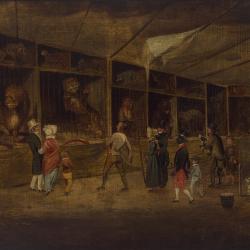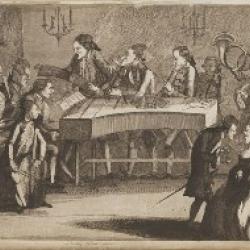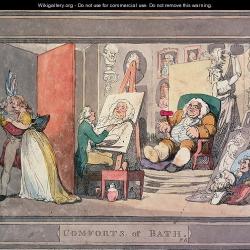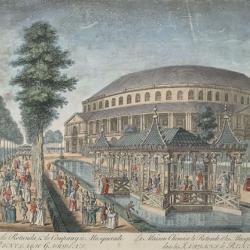
Menageries
SASSO Eleonora
Georgian menageries are to be seen as the predecessors to the more formal zoological societies of the Victorian era. As the British Empire expanded, private and public menageries were populated by exotic animals seen as objects of fascination and wonder and whose aim was to entertain visitors and guests as well as to satisfy the curiosity for the animal world.

Musical evenings (Dr Burney's)
HANSEN Mascha
The ‘Sunday evening musical parties hosted by Dr. Burney’ were informal gatherings of musicians as well as writers, actors, and painters, in order to perform in and listen to concerts, given both by amateurs and some of the most brilliant singers and musicians of the day.
![Charles Burney [collector], ‘Burney Collection. ‘Theatrical Register.’ A collection of playbills of London theatres, chiefly of Drury Lane, Covent Garden and the Haymarket’, British Library, 937.b-e, 1774-1777. Playbills](/sites/default/files/styles/notice_teaser/public/notices/Sans%20titre.png?h=2f70d320&itok=psDG5geb)
Playbills
NOBLE Katie
More than just simple adverts for the theatres, the ‘playbill’ or ‘bill of the play’ had a significant role in sociability throughout the eighteenth century. On the London stage, in provincial theatres, and even in private theatricals, playbills were an established mode of communication between the theatre and their audiences.
Pleasure gardens
ADAMCZEWSKI Tymon
Pleasure gardens were a type of eighteenth-century public spaces which offered diverse forms of entertainment for their visitors. Their spatial design coincided with the growth of the public sphere and fostered disparate forms of social interactions on their premises. Related to the growing commodification of culture as expressed in corresponding forms of leisure, they can also be linked to the rising significance of culturally conditioned notions such as taste, fashion or visibility.

Portraitists' studios
MESPLÈDE Sophie
As British portrait painters’ working spaces evolved from craftsmen’s workshops into painting rooms supplemented with exhibition rooms and fitted out to accommodate Society patrons, they became places of intense sociability.

Ranelagh
MARTINET Marie-Madeleine
Ranelagh was one of London’s pleasure gardens, a typical eighteenth-century locus of sociability, which offered a mixture of social classes – suitably dressed people could attend - while retaining a flattering feeling of exclusiveness.